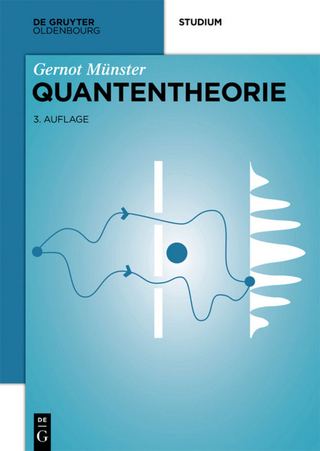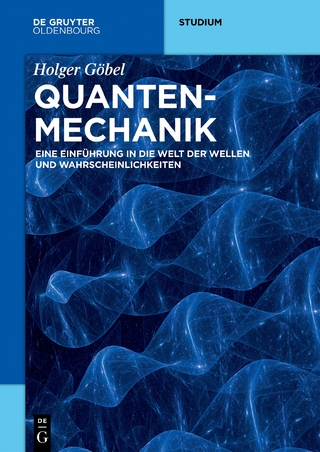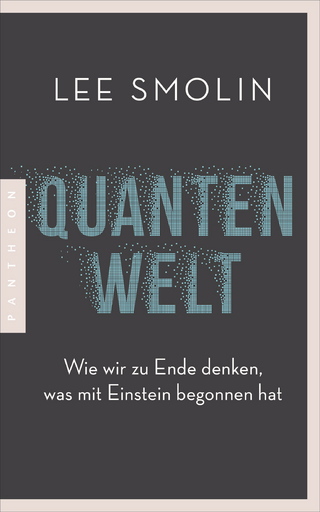
Einstein's Entanglement
Oxford University Press (Verlag)
978-0-19-891967-4 (ISBN)
- Noch nicht erschienen (ca. August 2024)
- Versandkostenfrei innerhalb Deutschlands
- Auch auf Rechnung
- Verfügbarkeit in der Filiale vor Ort prüfen
- Artikel merken
Einstein introduced quantum entanglement in 1935 and referred to it as “spooky actions at a distance” because it seemed to conflict with his theory of special relativity. Today, some refer to it as "the greatest mystery in physics" and the 2022 Nobel Prize in Physics was even awarded for experimental confirmation of the "spookiness." While the mystery is experimentally well-established, its solution remains elusive because it is commonly believed that quantum entanglement entails that quantum mechanics is incomplete, that the world works according to "spooky actions at a distance," that causes from the future create effects in the present, that there is "superdeterministic" causal control of experimental procedures, that people can correctly disagree on the outcome of one and the same experiment, and that a single experimental measurement can produce all possible outcomes.
In this book, a rigorous solution to the mystery of quantum entanglement is provided that entails none of those things. The key to this seemingly impossible feat is - to use Einstein's own language - a "principle" explanation that foregoes the need for any "constructive" explanation of quantum entanglement, such as those listed above. Ironically, the proposed principle explanation is Einstein's own relativity principle as grounded in quantum information theory. So contrary to popular belief, quantum mechanics and special relativity are far from inconsistent, as both are a consequence of the exact same relativity principle.
W. M. Stuckey earned a Ph.D. in physics with a thesis in general relativistic cosmology under Louis Witten at the University of Cincinnati in 1987 and is now a Professor of Physics at Elizabethtown College. In his 36 years there he has taught numerous courses in physics to include quantum mechanics, special relativity, general relativity, and foundations of modern physics. In addition to his work in foundations of quantum mechanics, he has published journal articles on cosmology, dark matter, dark energy, and general relativity. Michael Silberstein is Professor of Philosophy at Elizabethtown College, Director of the Cognitive Science Program, and a Core Neuroscience Faculty member. His primary research interests are foundations of physics, foundations of cognitive science, and the science of consciousness. He is also interested in how these branches of philosophy and science bear on more general questions of reduction, emergence, and explanation. His two most recent book with OUP are Beyond the Dynamical Universe (2018) and, Emergence in Context (2022), with Robert Bishop and Mark Pexton. Timothy J. McDevitt earned a PhD in Applied Mathematics from the University of Virginia in 1996 studying the deformations of elastic shells. He has worked in academia for 24 years, but he also spent time in the employment of the US government, and he was a Congressional Fellow in 2021-2022 for the American Association for the Advancement of Science representing the American Statistical Association. Tim especially enjoys interdisciplinary research and he has published articles in cryptology, engineering, math, medicine, philosophy, and physics.
Preface
0: Albert's Mysterious Quantum Gloves Experiment
1: Introduction: Nobody Understands Quantum Mechanics
2: The Mystery: Mermin's Device
3: Constructive Responses to Bell's Theorem
4: A Precedent: Special Relativity
5: Einstein's Principle or Reichenbach's?
6: A Principle Response from Quantum Information Theorists
7: Mystery Solved: Oh, the Irony
8: Superquantum Probabilities: Why No PR-Box?
9: 9 What's Really Going On?
9A: Interpreting Quantum Mechanics in a Realist Fashion
9B: Gravity Matters
9C: The Delayed Choice Experiment
9D: Schrodinger's Cat and Wigner's Friend
| Erscheint lt. Verlag | 1.8.2024 |
|---|---|
| Zusatzinfo | 83 line illustrations and 2 halftones |
| Verlagsort | Oxford |
| Sprache | englisch |
| Maße | 156 x 234 mm |
| Themenwelt | Naturwissenschaften ► Physik / Astronomie ► Quantenphysik |
| ISBN-10 | 0-19-891967-0 / 0198919670 |
| ISBN-13 | 978-0-19-891967-4 / 9780198919674 |
| Zustand | Neuware |
| Haben Sie eine Frage zum Produkt? |
aus dem Bereich


